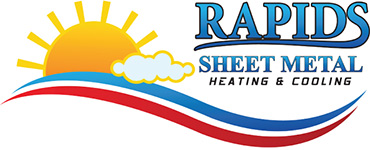Everyone’s always looking to save money on their utility bills, but you should know there’s a way to do it when you aren’t even home.
The key is your thermostat. By using automatic schedules, you can structure its daily schedule around your personal preferences. This means establishing various temperature settings for when you’re at home, away or even when you’re asleep.
By trying a few of these schedules, you’ll be able to enjoy comfortable temperatures while also keeping more of your money. Check out our guide on how your thermostat can be a source of energy savings:
While at Home
When you’re home, you want a nice range of pleasant temperatures. That’s why it’s best to set your thermostat lower in the summer if you’re indoors to appreciate the cool air.
But the ideal temperature for when you’re in your home during the summer is in fact anywhere between 78 and 80 degrees Fahrenheit. This way, you’ll keep cool while still keeping your energy bills low.
While Away
When it comes to setting the temperature for a vacation or other trip away from the house, the majority of homeowners will set the thermostat higher than you would if you were in the house.
If your home is located somewhere a little cooler, you can set the temperature as high as 88 degrees while no one is home before lowering it back to the sweet spot of 78-80 degrees after you return. This way, your air conditioning system isn’t working around the clock to provide cooling for a bunch of empty rooms.
While Sleeping
When it comes to sleeping in the summer, you want a nice cool temperature. A great place to start is between 68-72 degrees Fahrenheit. There’s less risk of getting too hot or too cold at some point overnight.
Other Ways to Use Less Energy:
- Smart thermostat installation: Trying a smart thermostat in the summer helps save money on energy costs since it can plan your temperature adjustments according to your lifestyle and home environment. It’ll take care of making changes while you are home or sleeping, before allowing it to get a little warmer when the house is empty. Using reputed brands and models such as the Lennox iComfort, you can adjust the temperature remotely through your smartphone, tablet or laptop. Requesting smart thermostat installation in your Wisconsin Rapids home can be the simplest strategy for maintaining comfortable, yet energy-efficient temperatures whether you’re at home or across the country.
- Replace current equipment with a newer HVAC system: A new HVAC system is another great option for long-term energy savings. If a system boasts high energy efficiency, your utility bills will be lower because it requires less energy to heat and cool your home. Air conditioning installation in Wisconsin Rapids is a great way to beat the heat in the summer.
- Schedule annual AC maintenance: Hiring a skilled professional to perform regular air conditioning maintenance in Wisconsin Rapids can have a significant impact on your utility bills. By regularly cleaning the coils, checking for damage and clearing air vents of dust and debris, this can help your HVAC system perform better during day-to-day use.. Higher energy efficiency will also reduce strain on the unit and lowers operational costs, lowering total energy use and eventually the total monthly bill.
- Clean or replace the air filter on a regular basis: Cleaning or replacing the air filter regularly saves money by improving airflow. When filters are old and less effective, your air conditioner will have to work harder, and the added strain may impact the system’s life span and result in breakdowns.
- Confirm your attic is sufficiently insulated: Insulation is a vital part of maintaining an energy-efficient home, securing the hot air outside and the cool air inside through summer. The North American Insulation Manufacturers Association (NAIMA) offers an official recommendation stating homeowners in souther states should possess at least 13-14 inches of insulation, while those in northern U.S. states should have 16-18 inches.
- Review your ductwork: Damage to the ventilation is capable of increasing your energy bills much more than 20 percent, plus it can potentially allow harmful emissions from your water heater, clothes dryer and other appliances throughout your home. Watching for signs of leaks and sealing them can help with both these issues.
- Seal all other leaky spots in your home: Sealing up other leaks in your home with caulk, foam sealant or weather-stripping can help keep it cooler on hot summer days. It’s also important to check for any gaps around windows, doors and even outdoor fixtures. Taking the time to seal up any leaks now can help you save a lot in the long term.
